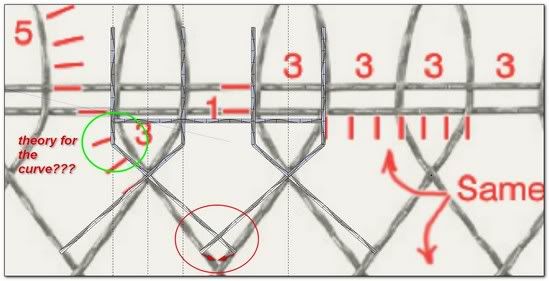An exercise: DRAWING A PARISIAN FENCE
-
@simon le bon said:
The diamond need to be done with an odd number of semi waves.
If I take the same wave and use 5 semi waves:
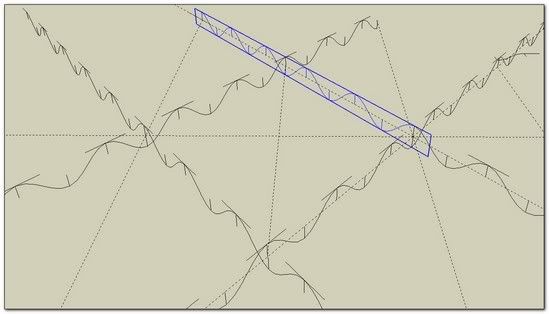
that works perfectly.Recall that I, also, had a couple of "false starts." You have just re-solved my first false start.

My second mistake involved the horizontal "rail" strips that run at the top and bottom of the fence. That spacing also has to be precise, or they won't braid, either.
(And you can't cheat, by using a different sinusoidal spacing. The fence is supposed to be made of all the same sine-wave wire.)

-Taff
-
@unknownuser said:
When you have flat model, curved can be made by the Fredo Scale, no?

That should work fine, for "bending" the top hoops, and the short segments just below the top rails.
(Pilou, when I first read your post, I wasn't quite sure what you were talking about. Looking back, your idea makes sense, even though I haven't tried it.)

-Taff
-
And now the coup de grace


-
The fence, so far, looks too "wimpy" for my tastes.
By increasing the amplitude of the sinusoidal paths, and increasing the diameter of the tubular cross-section circle, the fence is no longer made of heavy-gauge wire, but of sturdy wrought iron:
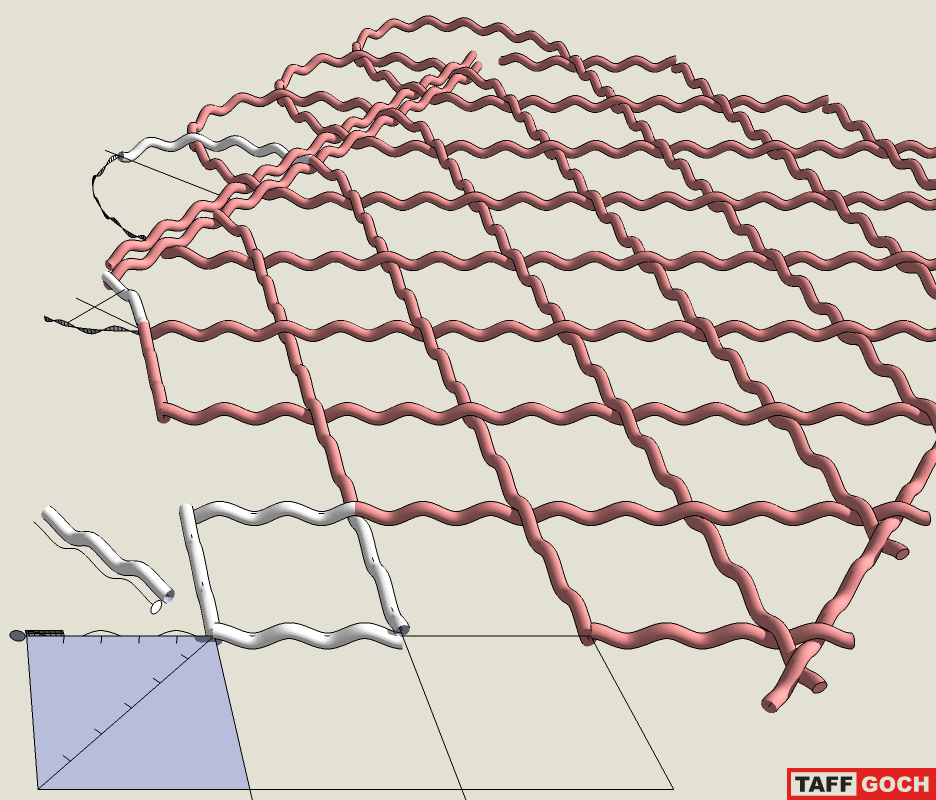
Achieved by editing only the component definitions. No new spacing or sine-wave construction required -- only sine-amplitude scaling, and new "follow me" extrusions, using a larger circle.(There are similar wrought-iron fences in New Orleans.)
Model available in 3D Warehouse:
Parisian Fence - "Beefier" VersionOriginal model:
Parisian Fence • Exercise-Taff
-
@unknownuser said:
And now the coup de grace


Sorry Taff to be so slow

(I still haven't opened you skp)
I have very carefully made a new sinusoid in order to match the 5 semi-waves of the diamond with the picture.
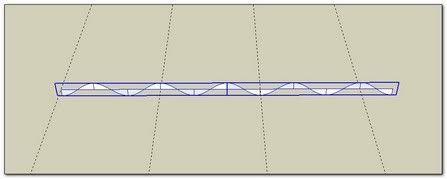
I agree with you that the same sine-wave have to be used for the horizontal "rail" strips,
@unknownuser said:
(And you can't cheat, by using a different sinusoidal spacing. The fence is supposed to be made of all the same sine-wave wire.)

my mind is the good positioning of them give a starting point for all the geometry.I found (evidently) the same results as you
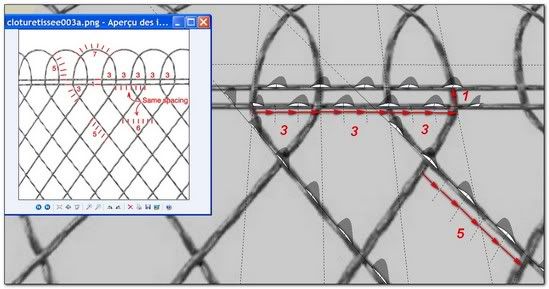
Strangely, nothing actually leads me to your intuition of the shared spacing of 6 1/2waves !
I have next tried to see if:
The size of angles are significant in structure of the diamond ?The answer is Yes and No

The angle of the diamonds on the referential picture, taken by the upper side is about 37°
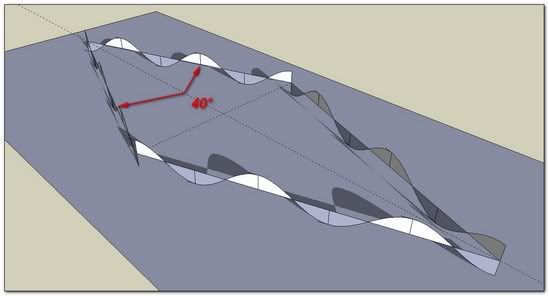
If I diminish it to 20° the braiding is still efficient, depending only of the thickness of the string.
but the point is that then the above horizontal "rail" strip doesn't match anymore at all!!
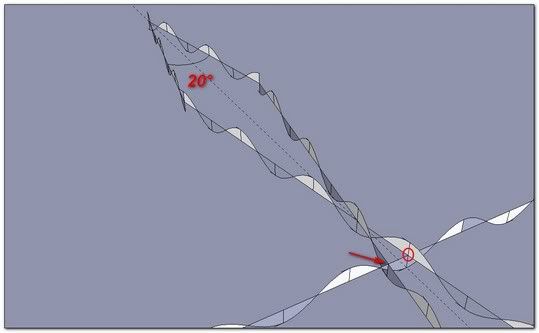
This try leads me to understand that the ideal and true angle for the diamond is 60° Then the above horizontal "rail" strip match perfectly


Now I am going to see with the curve.
My Idea is to bend the sinusoid as Pilou's way. I am going to try Chris Fullmer's Shape Bender to establish the curves..to be continued..
 simon
simon -
@simon le bon said:
This try leads me to understand that the ideal and true angle for the diamond is 60° Then the above horizontal "rail" strip match perfectly

Careful, there, Simon...

...that was my second mistaken false start! Before I discovered the semi-sinusoidal count, of 6 [NOT 6½ for the horizontal spacing.]
-Taff
-
Simon,
You are not the only one to learn by making/correcting mistakes. (The best kind of learning.)
I just discovered a spacing mistake I made in the top-rail/hoop area!

If you're sharp-eyed, you should be able to see the difference between the model I posted here (as an earlier attachment,) and the model I've posted (fixed) at the 3D Warehouse: Parisian Fence • Exercise
-Taff
-
About le "coup de grace", I believe that it will be very easy with Shape Bender by Chris Fullmer

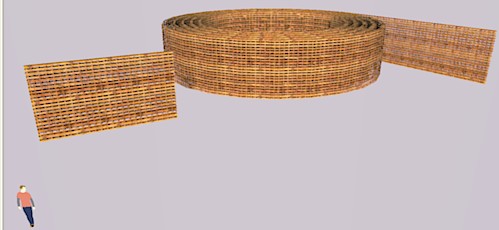
-
flat coup de grace
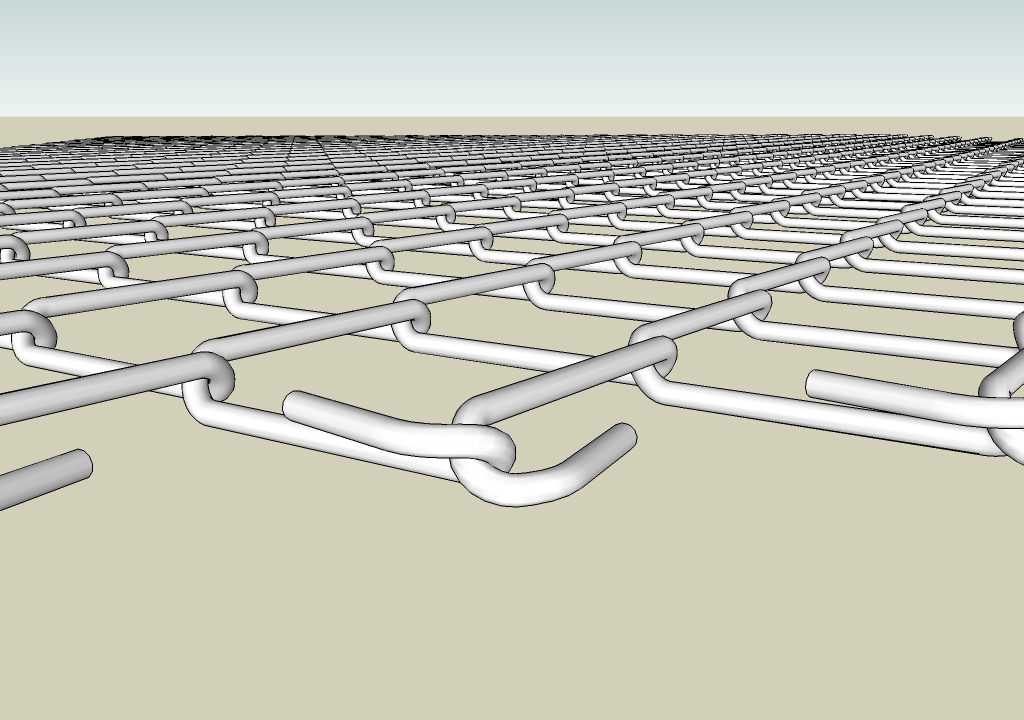
-
@Ely!! Hey Guy, I like your way


@taffgoch said:
I just discovered a spacing mistake I made in the top-rail/hoop area!

If you're sharp-eyed, you should be able to see the difference ..I don't see

(I'm very honored you have add this exercise to your Warehouse Collection...)
Well I'm glued . May be I haven't the level to solve

 sim
sim -
@simon le bon said:
Well I'm glued . May be I haven't the level to solve
Simon,
You may be stuck (temporarily,) but I am confident, from the quality of the images you've posted, that you have the necessary skills/perception to reproduce the fence geometry.
As a physicist, I have faith in "trial and error" experimentation, to solve a problem. You have been demonstrating that you, too, keep experimenting until you find a solution. You are to be commended for not giving up!
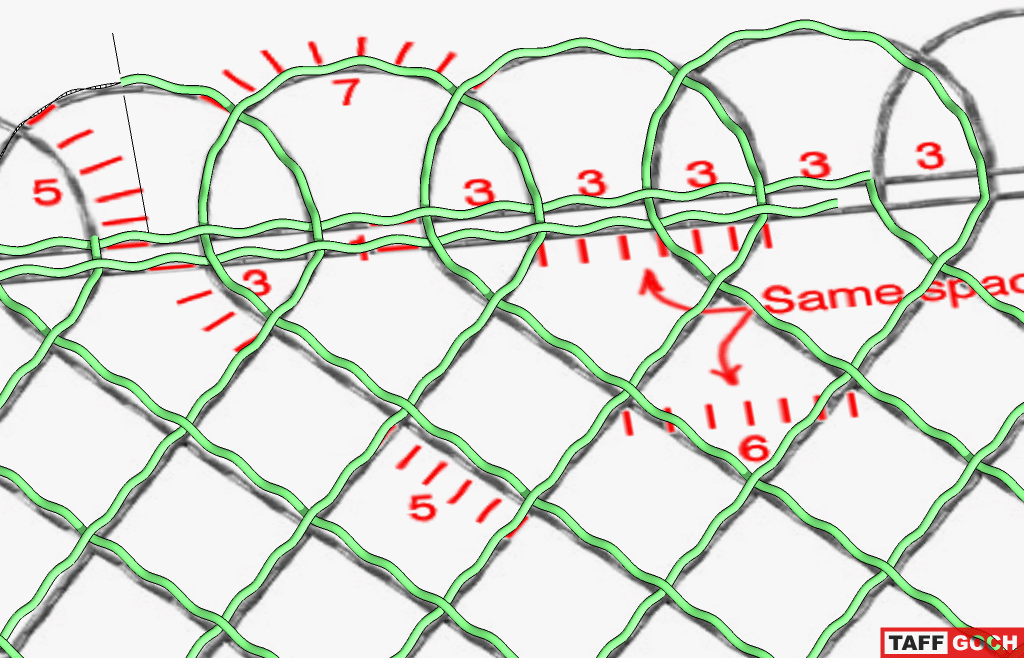
(You always have the 3D Warehouse model to which you can refer, if necessary.)-Taff
-
 2nd step done
2nd step done  .. bending was done with Fredo's Radial bending.
.. bending was done with Fredo's Radial bending.
I did't paid too much attention to the maths(but i made it correctly) and it came out pretty nice.
Just need to close the loop and it s done .
.
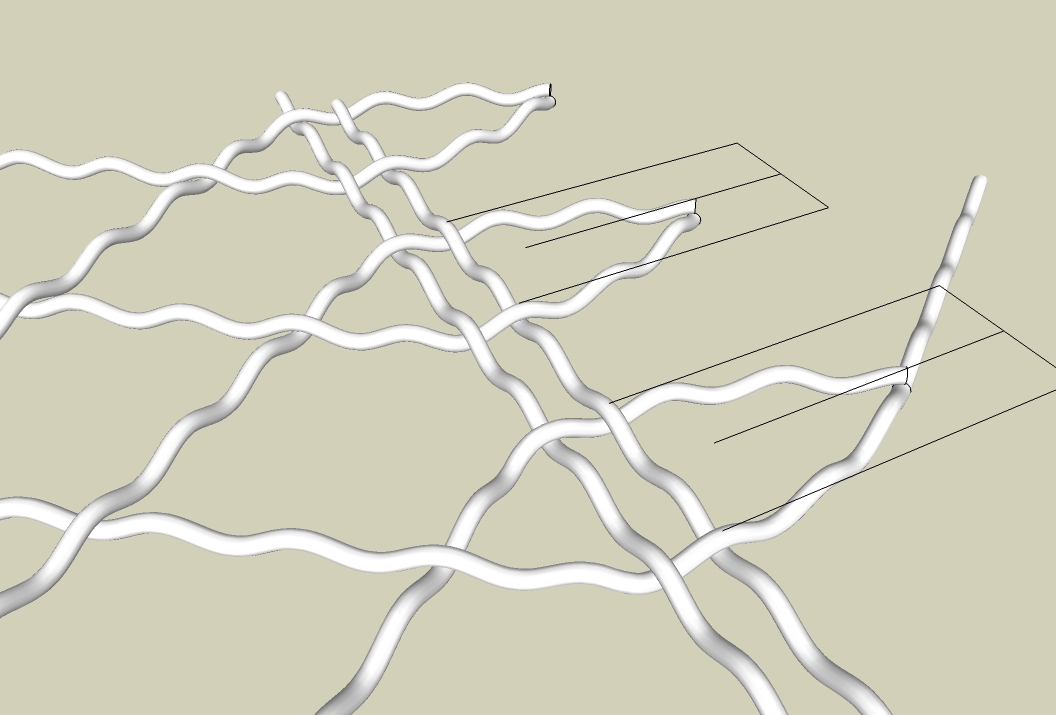
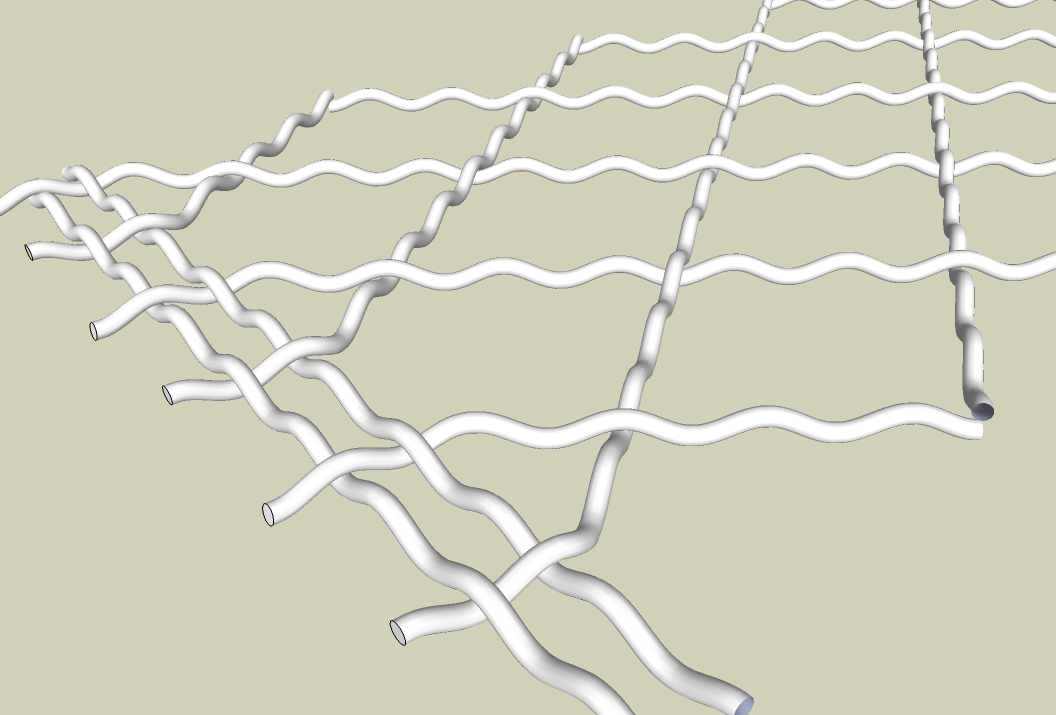
-
@ely862me said:
2nd step done
 .. bending was done with Fredo's Radial bending.
.. bending was done with Fredo's Radial bending.
I did't paid too much attention to the maths (but i made it correctly) and it came out pretty nice.
Just need to close the loop and it's done .
.Elisei,
Looks great!
I assume that the sinusoidal segments are still the same length? (It appears so, but I can't tell if they are precisely equal, without measuring.)
-Taff
-
Honestly i didn t measure them after bending
 ,and i tend to say they are not even.
,and i tend to say they are not even.
Anyway it s finished! Not as perfect as yours but visually almost perfect!


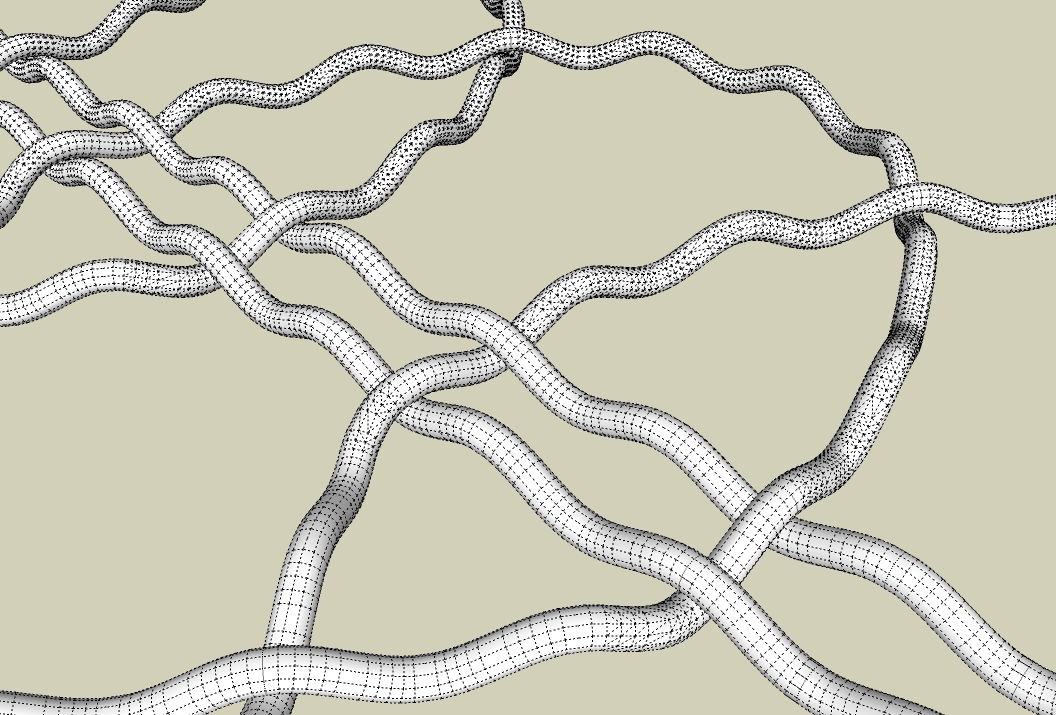
-
@ely862me said:
Honestly i didn t measure them after bending
 ,and i tend to say they are not even.
,and i tend to say they are not even.
Anyway it s finished! Not as perfect as yours but visually almost perfect!Elisei,
Well, it looks right, and that's what counts. (It is a 3D representation, after all.)
The only difference I can see is more triangulation in the curved hoops, but that's to be expected. I'm sure it was much faster, using Fredo's bending tool, rather than constructing the path, segment-by-segment, as I did.
Nice results!

-Taff
-
Hey hey, I'm definitely too slow for this exercise.
(spading the garden helps to sketch)
Bravo Elysei! you race at the top
@taffgoch said:
You may be stuck (temporarily,) but I am confident, from the quality of the images you've posted, that you have the necessary skills/perception to reproduce the fence geometry.
Thank you so much Taff!
Well I take the problem by another end: The heads of diamonds are in place leaded by the two fixed pivots. Then the two 5xsemi-waves are rotated to meet along the center the third fixed pivot!

Then I draw a Bezier spline curve and arrange the three single semi waves arround their pivots. (that I have previously missed) in order to meet the vertical directions. Then I move verticaly the rails to make them match.

If I don't go faster, It is you who are going to give up
 simon
simon -
@Taff Yeah,that was the point,to not kill too many neurons and make it quicker
 .
.
I wish i have ur patience and ur knowledge about these kind of stuff.
Thanks for helping us to learn a bit more .
@Simon Thanks for compliments and for bringing this challenge up for us.Btw,u are going in the right direction with this(maybe i was a bit faster but your model will look spotless as Taff's)Here u go,my geometry imperfection
 Parisian Fence.skp
Parisian Fence.skpLive in peace!
-
Elisei,
I opened your model, and measured the distance between sinsusoidal crests.
Straight or curved, lengths are spot on!
Makes me really admire Fredo's tools, even more than before.
-Taff
-
Dear Taff and Elisei
I keep going after all: I think I have a good idea for the final curved sinusoid but without help of a bending tool.
The last development leads me to find (as you) the mathematical size of 6 semi-waves diamond's width.
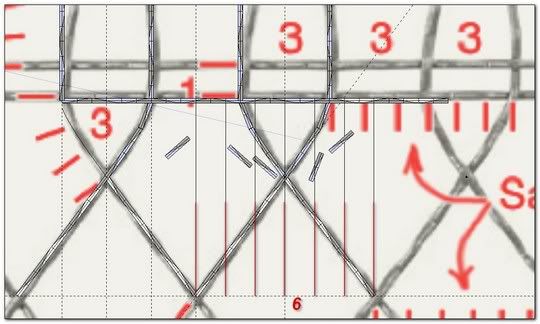
So the Diamond becomes a mathematical object perfectly defined in its own dimensions: 6X width, 5x for the sides.
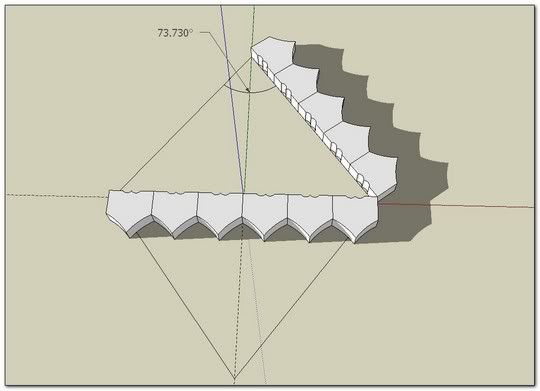
We only have to say that SketchUp loose the preciseness to calculte the angle, and don't return two times the same value.
But the preciseness is two point better that what gives the tables of sinus:

simon
-
It's maybe not a good idea to use the Shape Bender for a long parisian fence roll!
Better is make a texture from an image result!
(and if it's Nasa who give Sinus'waves that will be even more precise

Advertisement


